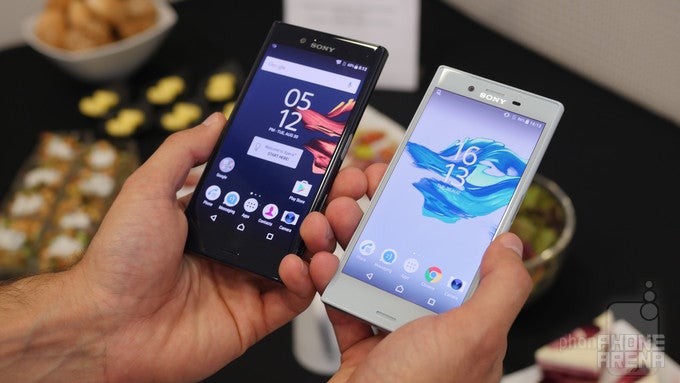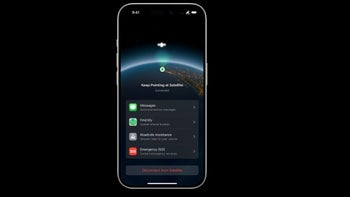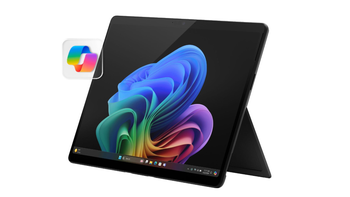Sony Xperia X Compact hands-on

Sony is breathing new life in its Xperia compact phone lineup with a brand new phone: welcome the Xperia X Compact.
Exactly a full year after the uveiling of the Sony Xperia Z5 Compact, a phone with top-of-the-line specs, large battery and miniature form factor, Sony has reimagined the series with the Xperia X Compact.
The new X Compact retains the portability advantage with the same 4.6" display size and format, but rather than featuring the top-shelf Snapdragon 820 system chip that its beefier Sony Xperia XZ sibling has, Sony has opted to equip the X Compact with the more economical Snapdragon 650 on board. There is one other important feature missing: you won't find 4K video recording on the X Compact. Still, it shapes up to be one of your best options, if you're looking for a petite pocket sidekick.
| Sony Xperia X Compact | |
| Platform | Sony UI on top of Android 6.0.1 Marshmallow |
| Dimensions | 129 x 65 x 8.5 mm 135 g weight |
| Display | 4.6" IPS LCD 720 x 1280 pixel resolution |
| SoC | Qualcomm Snapdragon 650 (2x Cortex A72s, 4x Cortex A53s) |
| Cameras | 23MP main cam (Sony IMX300 sensor, 1/2.3" size, f/2.0 lens) 8MP front cam |
| Battery | 2,700 mAh |
Camera: 5-axis software stabilization, sharper images and laser AF
Rather than talk you through all the features, let's focus on what's new and notable on the X Compact. First and foremost, that's the camera. We're dealing with a 23-megapixel main camera and an 8-megapixel selfie shooter. The main camera features a custom-made Sony IMX300 sensor of 1/2.3" size, which is currently the largest sensor size we've seen on phones. On top of it is a Sony G lens with f/2.0 aperture and a 6-element construction.
Sony claims improvements in three key areas with this new camera: focusing, stabilization and image processing. Sony adds laser auto-focus to the X Compact. Laser AF works in the following way: a tiny infra-red (invisible to the eye in regular light) laser beam is shot. It has a spread of around 3 feet and helps lock focus much faster in low light. Then, there is stabilization: no optical stabilization (OIS) is on board, but Sony has vastly improved its software stabilization and now compensates for movement in 5 axis, including shift and shake. Finally, there are improvements in the image processing with better dynamics, better handling of both highlights and shadows that are now more balanced, and a sharper resolved image.
There's also now a separate color sensor that helps determine the white balance of a picture much more accurately, so you get nice colors in various lighting situations.
Up front, there is an 8-megapixel selfie shooter and the new thing about it is that it uses a much larger than before, 1/3" sensor, and it also makes use of the 5-axis software stabilization that results in sharper images and smoother video.
Battery: improving battery health in the long run
The Sony Xperia X Compact is equipped with a 2,700mAh battery and it supports Qualcomm's QuickCharge spec. There is something else, though, that's important here: Sony has worked on improving battery longevity. What do we mean by battery longevity? Simple, it's the health of the battery over the long run, the life span of the battery.
With nightly charges, what happens is that the battery remains plugged in long after it's fully charged and this continuous trickle charge is stressful to a battery cell and makes it degrade faster. Sony's clever trick here is that it knows that you wake up at, say, 7am, and it would stop charging the battery at night when it reaches around 90%, and will only resume charging closer to your wake-up time. This way, you still wake up with a fully charged battery, but the damage from excessive charging is avoided. Ultimately, this will help preserve your battery health over the years.
New "Unified Design" with Loop edges
Sony introduces a new "Unified Design" concept with the XZ and X Compact, but while the XZ is made out of metal and looks premium, the X Compact is made out of plastic with a glossy finish that is an absolute fingerprint magnet. Sony also introduces a new 'loop' design feature, a fancy name for the slightly tapered sides of its new phones, a little touch that contributes to a more comfortable in-hand fit.
The elephant in the room with the X Compact is - of course - its petite size. The exact dimensions of the phone are 129 x 65 x 8.5mm, with a weight of 135g, and while it does feel compact indeed, it's also on the chubby side with that rather thick body.
Interface
The look of the Sony UI hasn't changed: we have the familiar interface running on top of Android 6.0.1 Marshmallow, but Sony does add two neat new feats. The first one is an automatic tips section that would do things like remind you to set-up your alarm, and the second one is a 'smart cleaner' utility. There are many apps with similar functionality on the Play Store, but all of them require you to tap on a button and clear the cache manually, while Sony's solution is completely invisible and automatic, taking care of all that on its own.
Under the hood
The Xperia X Compact is equipped with the Qualcomm Snapdragon 650 system chip. Manufactured on the 28nm HPm process, the Snapdargon 650 features two high-performance Cortex A72 CPU cores and four battery-efficient Cortex A53s.
The Snapdragon 650 is one of the better upper mid-range chips, delivering performance roughly on par with the Snapdragon 810, and our initial impressions are that the X Compact runs very smoothly for daily tasks.
Expectations
The Sony Xperia X Compact is clearly positioned as a mid-range phone: while last year's Sony Xperia Z5 Compact had a top-shelf chip and some higher ambitions, here, we're looking at a mid-ranger with all the expected compromises in design and features.
The plasticky feel, lack of beefed up processor and lack of 4K video in particular make the X Compact no match for the iPhone SE, for example, a phone that also targets the niche of compact handsets.
Chances are, however, Sony will also price this lower and that pricing would be key to the device's success. We like its display, the camera looks promising and daily performance seems smooth at first glance. Will that be enough in the competitive Android space, though? That's a much more complicated question.











Things that are NOT allowed: